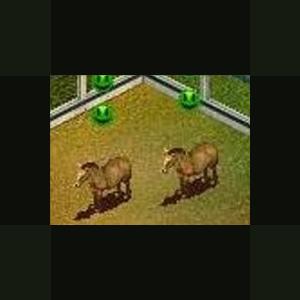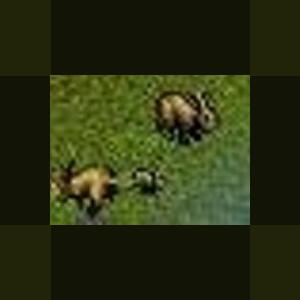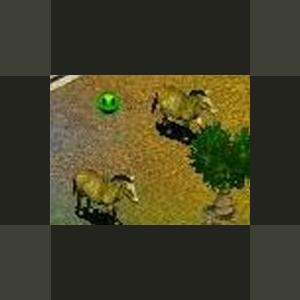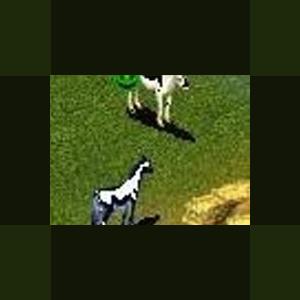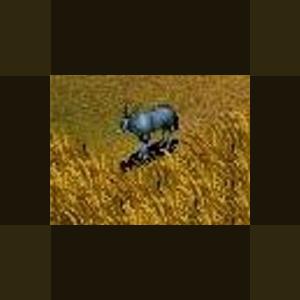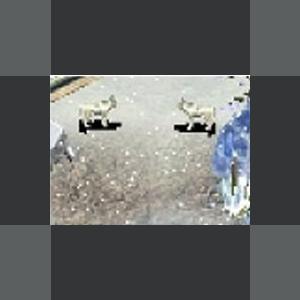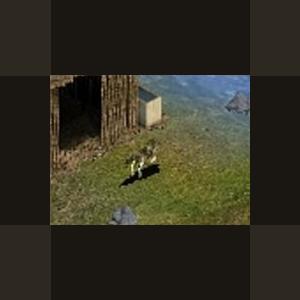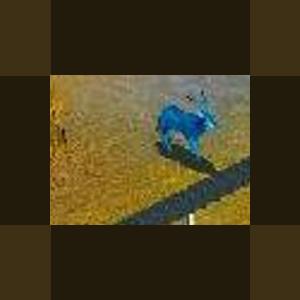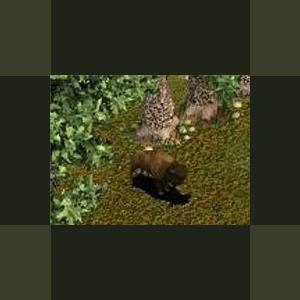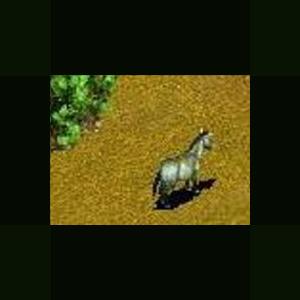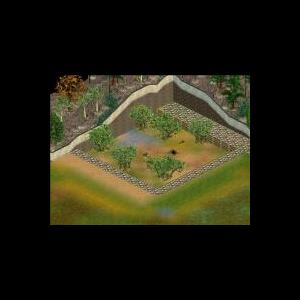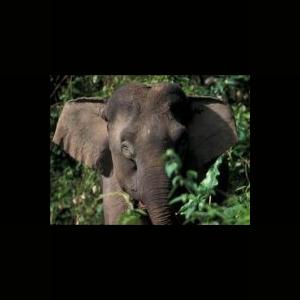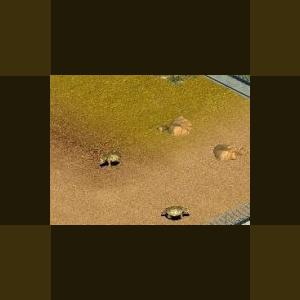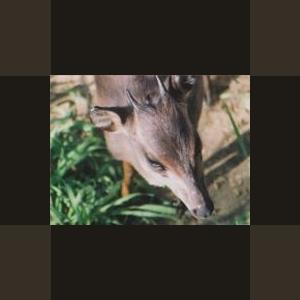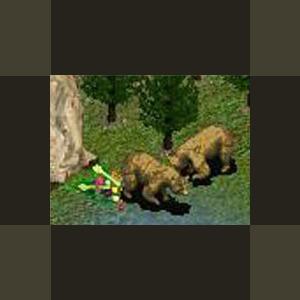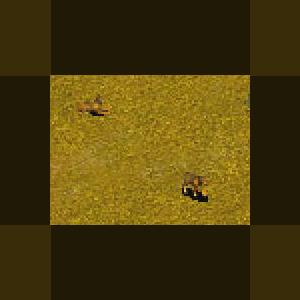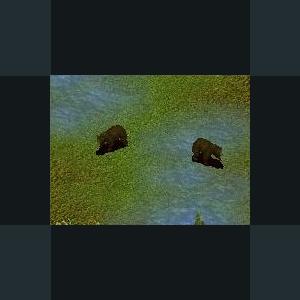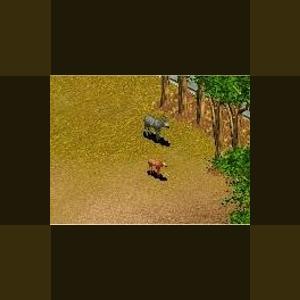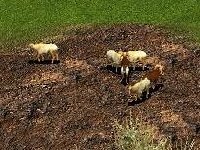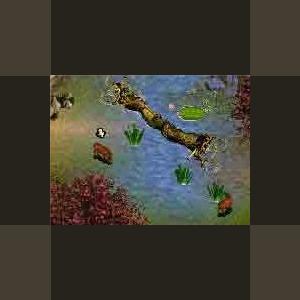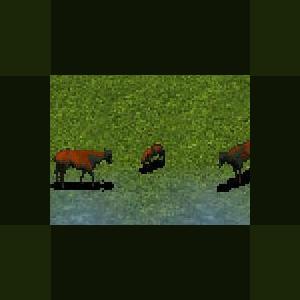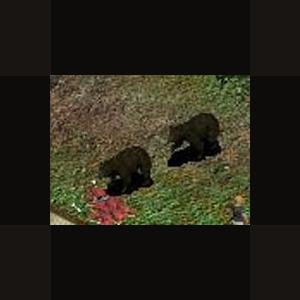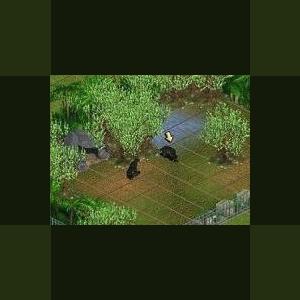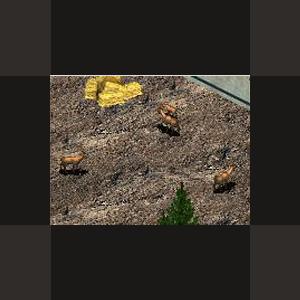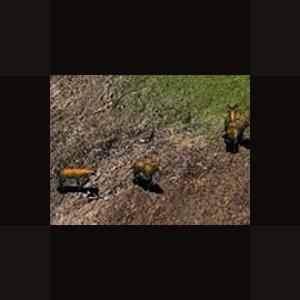279 files
-
Champagne Horse by Sundance
By Guest
Champagne Horse by Sundance
A beautiful horse by Sundance. Made with help from Jay. Thank you, Jay!
Updated 2010-10-30
Just to save space with less in zip and smaller image.
Nothing new.
233 downloads
0 comments
Updated
-
European Rabbit by Sundance
By Guest
European Rabbit by Sundance
In several parts of the world the European rabbit is known for the damage and depredation. It was introduced into Britain by the Normans, and introduced from there by settlers into Australia and New Zealand.
Once introduced in the wild its numbers increased and livestock pastures and crops were devastated. In Australia, the near extinction of several types of marsupials can be attributed to competition with rabbits. European rabbits can be prolific breeders. One doe can produce up to thirty young in a single breeding season.
works with ZT, DD, MM and CC.
Updated 2010-11-03
Just to save space with less in zip and smaller image.
Nothing new
390 downloads
0 comments
Updated
-
Azteca Horse by Sundance
By Guest
Azteca Horse by Sundance
A beautiful horse by Sundance. Made with help from Jay. Thank you, Jay!
Updated 2010-10-30
Just to save space with less in zip and smaller image.
Nothing new.
304 downloads
0 comments
Updated
-
Painted Horse by Sundance
By Guest
Painted Horse by Sundance
What's the difference between a pinto horse and a paint horse? Nothing. Although Paint usually is used to describe a registered pinto horse of Quarterhorse and/or Thoroughbred horse breeding, Pinto markings can be found in about any breed.
The British use the terms skewbald and piebald to describe pintos. A skewbald horse is a horse of any other color than black with white spots, while the piebald is a black horse with white spots. Genetically, there are four major paint patterns, the overo, the tobiano, and the much neglected sabino and splash white.
works with zt, dd, mm and cc
Updated 2010-11-05
Just to save space with less in zip and smaller image.
Nothing new.
371 downloads
0 comments
Updated
-
Blue Buck Gems by Sundance
By Guest
Bluebuck by Sundance
The Bluebuck was created by sundance, with fixings by Jay.
The early travellers found the blue antelope only in relatively well-watered country, which suggests that, like the roan and sable, it had to drink regularly. Also like the roan andsable, the blue antelope apparently lived in small herds of up to twenty individuals, and it was primarily a grass-eater or grazer that sometimes fed on the same pastures as sheep.
Updated 2010-10-30
Just to save space with less in zip and smaller image.
216 downloads
0 comments
Updated
-
Arctic Fox by Hit4Life and LAwebTek
By Guest
Arctic Fox by Hit4Life and LAwebTek
Arctic Fox - one of the original downloads from Zoo Tek.
Because of its thick coat, it is able to survive in freezing cold temperatures. Thick hair on the pads of their feet protect their feet from freezing and help them to walk on the ice. The Arctic fox can walk on ice without slipping. It uses ice floes to travel in search of food in the winter.
It can curl up in the snow and cover its nose and face with its bushy tail to keep warm. In the summer the fox will hide food in its den or under rocks. This is how it stores food for later use.
The Arctic fox is small (about the same weight as a cat) with short legs and short rounded furry ears. The bushy tail is about 30 cm. long. Its bushy fur coat makes it look much larger than it really is. Near the end of summer the grayish brown coat of the Arctic fox begins to grow thicker. The color of the fur turns gray and then white. The oily fur sheds water and helps to keep the fox dry.The female may have 4 to 11 pups. The average litter is 6 or 7 pups. She can have two litters a year. The babies are born in a den or burrow in late spring. A baby fox is the size of a kitten. Both parents take care of the blind cubs. At two weeks the cubs open their eyes. At three weeks they go outside and begin to explore.
To feed a litter of ten the parents must kill about thirty lemmings a day. When their family is almost grown, the parents feed them over a hundred lemmings a day! The young foxes are taught how to hunt and are independent by fall. The young males leave the family and form their own groups. The young females stay with the family group.
They prey on voles, lemmings, hares, ground squirrels, birds and birds' eggs. Foxes that live near the coast feed on shellfish, sea urchins and other shore animals. They check the shoreline for dead seals, whales, and dead fish . When meat is not available the Arctic fox eats fruit and berries.
The Arctic fox will even kill baby seals if the fox can find the seal's den in the snow .
The Arctic fox walks along the top of the snow and listens for small animals running under the snow. When they hear something, they jump up and down to break through the snow with their front paws. Once they break through, they can grab their prey.
Updated 2010-10-30
Just to save space with less in zip and smaller image.
Nothing new.
Updated: July 25, 2009 to allow the arctic fox to swim on water terrain without ZT crashing and to change the ztd name because there are multiple arctic foxes amongst the different sites.
Updated: January 15, 2021 by fern to stop the arctic fox from disliking itself.
Current arctic fox_h4_LA.ztd dated 15 January 2021
Note: Previous ztd names: arctic fox.ztd, ArcticFoxbyHit4LifeandLAwebTek.ztd
437 downloads
0 comments
Updated
-
Welsh Pony by Sundance
By Guest
Welsh Pony by Sundance
Here is another equine from that rootin-tootinest (whatever that means), greatest horse lovin' gal on this side of the OK Corral. It is a Welsh Pony by Sundance. Made with help from Jay. Thanks, Jay!
The original home of the Welsh Mountain pony was in the hills and valleys of Wales. He was there before the Romans. His lot was not an easy one. Winters were severe. Vegetation was sparse. Shelter, most often, was an isolated valley or a clump of bare trees. Yet the Welsh pony managed not only to survive, but to flourish
Updated 2010-11-11
Just to save space with less in zip and smaller image.
Nothing new.
320 downloads
0 comments
Updated
-
Blue Buck Sable Antelope by Sundance
By Guest
Bluebuck Sable Antelope by Sundance
This guy is a real cutie! works with zt, dd , mm and cc.
The early travelers found the blue antelope only in relatively well-watered country, which suggests that, like the roan and sable, it had to drink regularly. Also like the roan and sable, the blue antelope apparently lived in small herds of up to twenty individuals, and it was primarily a grass-eater or grazer that sometimes fed on the same pastures as sheep.
Updated 2010-10-30
Just to save space with less in zip and smaller image.
157 downloads
0 comments
Updated
-
Wisent by Ghirin
By Guest
Wisent by Ghirin
The wisent (Bison bonasus) is the Old World member of the bison family. This bison is the largest land animal in Europe and is a forest dweller, unlike the plains bison of North America.
Reference:
www.wikipedia.org
Updated 2010-11-11
Just to save space with less in zip and smaller image.
Nothing new.
364 downloads
0 comments
Updated
-
Mustang by Sundance
By Guest
Another wonderful horse by Sundance.
Updated 2010-11-03
Just to save space with less in zip and smaller image.
Nothing new.
217 downloads
0 comments
Updated
-
Aardvark by LAwebTek
By Guest
Aardvark By LAwebTek
The aardvark is an odd-looking beast, resembling a giant, hump-backed rat with the head of an anteater, the snout of a pig, and the ears of a rabbit. It grows up to seven-and-a-half feet (2.3 meters) long, including its rat-like though thick and powerful tail. Adults average 110-150 pounds (50-70 kg), but may weigh as much as 180 pounds (82 kg).
Scientists placed the aardvark in its own order, Tubulidentata, which means tubule toothed. The name derives from the aardvark’s cheek teeth, which resemble flat-crowned columns. Each tooth is made of numerous tubular pulp cavities surrounded by hexagonal prisms of dentine.
Aardvarks are covered with thick pinkish-gray skin that protects them from insect bites and may even save them from predators. It is scantily covered with bristly hair varying from dull brownish-gray to dull yellowish-gray. Hair on the legs is often darker than that on the body. Low forequarters add to aardvark’s hump-backed appearance. Short, stocky legs end in toes bearing long, straight, strong, and blunt claws. There are four toes on each front foot, five on each hind foot. The toes are webbed at the base.
When pursued by enemies, aardvarks have three choices. The first two are run or dig! The aardvark isn’t known as a fast runner, though it is said to escape with surprising speed. However, aardvarks excel at burrowing. An aardvark digging in soft earth can beat several people armed with shovels! Its powerful forefeet can even tear through hard, sun-baked ground. What about that third choice? If cornered, an aardvark fights back. It may strike with its tail or shoulders or rear on its hind legs and slash with its clawed forefeet. A desperate aardvark may even roll on its back, slashing with all four feet.
Like most animals, aardvarks prefer to simply avoid predators. They have acute hearing, and flee for their burrows at the least hint of danger. But their eyesight seems to be poor; they frequently crash into trees, bushes, and other obstructions when running.
Aardvarks aren’t commonly seen because they’re mostly nocturnal. They usually spend the day in their burrows, curled up in a tight circle, the hind limbs and tail protecting the snout. Sometimes, an aardvark may be seen sunning itself at its burrow entrance in the early morning.
The aardvark is today restricted to Africa. It ranges from southernmost Africa (the Cape of Good Hope) to southern Egypt, but is generally widespread in suitable habitat south of the Sahara Desert. Aardvarks make homes by excavating burrows that are about ten feet (3 meters) long. An aardvark tunnel ends in a chamber large enough for the animal to turn in. (Aardvarks generally enter and exit headfirst.)
Aardvarks that burrow in areas prone to seasonal flooding are sometimes forced to evacuate their burrows. Aardvarks reportedly occupy termite nest as temporary shelters (perhaps when they’ve been flooded out of their burrows!).
Numerous aardvarks may burrow in same vicinity. Their abandoned burrows provide homes for many other animals, including large and small mammal predators, porcupines, some birds, and even crocodiles and pythons. In fact, the aardwolf (which is not related to the aardvark) usually lives in aardvark burrows.
It is its diet that caused the aardvark to evolve a form and habits similar to anteaters and other ant and termite-eating mammals. An aardvark’s powerful claws are adapted to breaking open hard clay termite nests. Its narrow head can be thrust into holes and crevices and it laps up insects with a sticky tongue that can be extended as much as twelve inches (300 mm).
Updated 2010-10-30
Just to save space with less in zip and smaller image.
Nothing new.
973 downloads
0 comments
Updated
-
Bornean Elephant by Jordan
By Guest
Bornean Elephant
Author: Jordan
http://www.zoo-tek.com/forums/index.php?download=172
Borneo's elephants (Elephas maximus sumatrensis) (Payne et. al. 1985) represent an island population on the perimeter of the distributional range for Asian elephants in Southeast Asia. Their distribution corresponds to the Northeast Borneo Ecoregion of WWF classifications. They are thus likely to be genetically distinct, and may have developed other adaptations from the populations on the mainland and within the central areas of the species' range. Elephants only occur between the Sugut River in north-eastern Sabah and Sembakung River in northern East Kalimantan. Distinct anatomical differences from mainland elephants have prompted some taxonomists to give the Bornean elephant subspecies status (Davies, 1962; Payne et. al. 1985). Despite these differences, often rumoured but never studied, stories persist that Borneo's elephant population may have originated from domesticated elephants released by either the Sultan of Brunei or the Sultan of Sulu, and add a special twist to the mystique of these elephants. The peculiarly restricted distribution on Borneo, the lack of truly fossilised remains and the lack of indigenous names for the species elsewhere on the island, lend credence to this theory but do not confirm it.
Surveys in the early 1990s indicated that Borneo may then have had 1000+ elephants (Dawson, et al., 1996). Recent opportunistic reports indicate that today's population may be higher. There are indications that over the last 15-25 years the elephant population in Sabah has dramatically increased in some localities. Possible reasons are the squeezing and concentration of remaining elephant populations into smaller forest patches due to land use change, and the conversion of primary to secondary forest through commercial harvest of timber, with concomitant alterations of food supply and habitat conditions. However, Borneo's elephants are now coming under very strong extinction pressure. Large-scale conversion of secondary forests to oil palm plantations has begun, and is expected to dramatically increase in the next few years. While elephants do not necessarily require forest to be undisturbed, they do require large tracts of land with plenty of food sources. They readily feed in all kinds of agricultural areas and can cause significant conflicts in areas where their range is fragmented by agriculture. In Sabah, elephants still range over a large connected forest area. Only a few herds are isolated in fragmented, yet still relatively large, forest patches. However, there is a very real danger that the current forest fragments will soon be too small to contain viable populations, and that the large connected forest area will soon be fragmented as planned plantation schemes are carried out. In Sabah, most elephant herds on the border of existing plantation schemes at this time cause little conflict, perhaps indicating that these forest patches are still large enough to supply all the elephants' resource needs. However, the Lower Kinabatangan River, and the Deramakot Forest Reserve much further to the west, are currently developing into major conflict sites. Elephant herd size in this combined area may be up to 500 elephants. The riverine forests of the Lower Kinabatangan, the area's premier remaining elephant habitat, is rapidly being converted to oil palm plantations. The threat of completely disrupting the movements of the resident elephants is very real as the last open habitat "bottle necks" are rapidly being bought up and fenced in by plantations. There are occasional but persistent reports of killings of conflict elephants in the area.
Designed by JordanMK exclusively for Tek Forums.
Updated 2010-10-30
Just to save space with less in zip and smaller image.
444 downloads
0 comments
Updated
-
African Spurred Tortoise by Jordan
By Guest
African Spurred Tortoise by Jordan
The African Spurred Tortoise lives in the deserts of North Africa and is second in size only to the Galapagos Tortoise. It enjoys desert foliage like the quiver tree in its exhibit.
Updated 2010-10-30
Just to save space with less in zip and smaller image.
Nothing new.
631 downloads
0 comments
Updated
-
Blue Duiker by Jordan
By Guest
Body Length: 50-75 cm / 1.6-2.5 ft.
Shoulder Height: 30-40 cm / 12-16 in.
Tail Length: 7-10 cm / 3-4 in.
Weight: 3.8-5.4 kg / 8.4-12 lb.
Females are generally larger than males in this duiker species. The colour of the coat varies with the region from slate grey to grey-brown, with a bluish sheen on the back. The underparts, inner legs, rump, and underside of the tail are whitish. There is a light eye-brow ridge which curves up to the base of the horns, as well as a glandular slit underneath the eye. The horns are strongly ridged and short, growing 2-10 cm / 0.8-4 inches long. The horns are sometimes absent in females, or hidden by the short head crest.
Gestation Period: 7.5 months.
Young per Birth: 1, rarely twins.
Weaning: By 5 months.
Sexual Maturity: Females at 9-12 months, males at 12-18 months.
Life span: 10-12 years.
Kids lie concealed away from the mother for 2-3 months. At this point their coat changes from reddish brown to the grey-blue colour of adults.
The blue duiker is mostly active at night and at dawn and dusk. Bonded pairs patrol their territory, which are 2.5-4 hectares in size, regularly marking them with scent clues from their pedal glands (situated between the hooves), facial glands, and from defecating. Both sexes chase off any intruders, but will remain tolerant of their own young until they reach 18 months of age. The mother and young contact through soft groaning calls, both freezing at the slightest alarm. Males may emit a whistle or a sneezing sound to raise the alarm. Population densities of up to78 per square kilometer have been recorded in Gabon.
Family group: Solitary or in mating pairs.
Diet: Leaves, buds, shoots, grasses, fruit, insects, eggs.
Created by Jordan, Zoo Tek Designer, 2005.
*Inspired by the Zoo Tek Nature Encyclopedia. (www.zoo-tek.com)
Updated 2010-10-30
Just to save space with less in zip and smaller image.
370 downloads
0 comments
Updated
-
Cave Bear by Ghirin
By Guest
The cave bear is an extinct species of bear from Europe. It lived during the Pleistocene era and became extinct approximately 10,000 years ago, at the end of the last glacial period. This animal's scientific name, Ursus spelaeus, is derived from the fact that many of the bear's skeletons have been found in caves. These bears seemed to have spent more time in caves, using them for hibernation, raising young, and dying in them.
Cave bears are similar to brown bears, but some notable differences are present. They were larger than current European brown bears (30%), had higher foreheads and were primarily vegetarian.
Mammoths, Sabertooths and Hominids by Agusti and Anton, 2002.
Created by Ghirin 2003
Updated 2010-10-30
Just to save space with less in zip and smaller image.
Nothing new.
380 downloads
0 comments
Updated
-
Bengal Fox by Ghirin
By Guest
The Bengal fox (Vulpes bengalensis), also known as the Indian fox, is the common fox of the Indian subcontinent. This fox is medium-sized and is a distinctive buff to sandy orange color. It lives in semi-arid regions, open grasslands, and lightly forested areas. The fox has been reported at elevations up to 1350 meters.
Even though Bengal foxes live in monogamous pairs, each fox hunts alone. The usual prey items include small mammals, ground nesting birds, and insects. They will also eat fruits in season.
Bengal foxes dig two types of dens: simple short ones for brief periods of rest and complex, cavernous ones with many entrances.
*Inspired by the Zoo Tycoon Brains Trust(http://www.geocities.com/professorpaul1/home.html)
Created by Ghirin 2003
Updated 2010-10-30
Just to save space with less in zip and smaller image.
379 downloads
0 comments
Updated
-
Brown Phase North American Bear by Ghirin
By Guest
Even though the most common bear of North America is called the black bear, this bear actually has several color phases. One of the phases is a dark brown color, and sometimes this color phase is confused with the larger brown bear. This particular color phase is more common in the western portion of North America and is thought to be due to the more open habitat of that region. Black, cinnamon, and blond "black" bears are also found in the same regions as brown phase bears.
Created by Ghirin 2004
Updated 2010-10-30
Just to save space with less in zip and smaller image.
220 downloads
0 comments
Updated
-
Lesser Kudu by Ghirin
By Guest
Lesser Kudu by Ghirin
The lesser kudu (Tragelaphus imberbis) is large antelope found in East Africa. Males and females are dimorphic. The males have grey-brown coats while females have reddish chestnut coats. They prefer areas of dry forest and thornbush.
References:
www.wikipedia.org
www.ultimateungulate.com
*Inspired by the Zoo Tycoon Brains Trust at the Zoo Tycoon Forums*
Updated 2010-11-03
Just to save space with less in zip and smaller image.
Nothing new.
392 downloads
0 comments
Updated
-
Audubon's Bighorn by Ghirin
By Guest
Audubon's Bighorn by Ghirin
Audubon's bighorn sheep (Ovis canadensis auduboni), also known as the Badlands bighorn sheep, was the most easterly population of bighorn sheep. This bighorn sheep was more adapted to living in the lowlands than the other subspecies, often grazing on the open prairie and retreating to the nearby rock formations when threatened.
As the open prairie became cultivated, the Badlands bighorn became isolated on the rock formations and was eventually hunted to extinction. The last sighting was in the 1920s.
Reference:
The Doomsday Book of Animals. Day, 1981.
Ghirin 2004
Updated 2010-10-30
Just to save space with less in zip and smaller image.
Nothing new.
Updated August 18, 2018 by Cricket so that screenshot would show up again.
379 downloads
0 comments
Updated
-
Arkansas Razorback by Voolfie
By Guest
Arkansas Razorback by Voolfie
The razorback is thought to have evolved from domestic pigs that Spanish conquistador, Hernando de Soto, and his expedition brought when they explored the Mississippi Valley region. Some would have been bartered with the local Indians, while others would have strayed from the expedition into Arkansas. After many generations in the wild, they reverted into thin, long-legged, mean hogs. Protruding tusks developed in long snouts for rooting and fighting. The name "razorback" referred to the sharp backbone trimmed with long bristly hair. As Arkansas become populated, homesteaders would hunt these new natives. Some were even captured and raised on the farm. With the coming of the railroad some would escape from their pens and get on the tracks.
One nineteenth century farmer wrote a poem and sent it to the local railroad claim agent: My razorback strolled down your track, A week ago today. Your #29 came down the line, And snuffed his life away.You can't blame me, the hog you see, Slipped through a cattle gate, So kindly pen a check for ten, The debt to liquidate. A few days later, he was surprised to receive the following: Old #29 came down the line, And killed your hog, we know, But razorbacks on railroad tracks, Quite often meet with woe. Therefore, my friend, we cannot send, The check for which you pine, Just plant the dead, place o'er his head, Here lies a foolish swine. (Previously published in RootsWebReview: Vol. 5, No. 12, 20 March 2002 with thanks to Nancy Lambert nlambert@pdnt.com]. Moving along to 1909, razorbacks in the wild were becoming a rare sight. That was the year that then University of Arkansas football coach, Hugo Bezdek, told his victorious team and student population- they played "like a wild band of Razorback Hogs." So as of the 1910 season the University of Arkansas' mascot has been a razorback. The team colors are red and white - naturally the razorback mascot is bright red. This Arkansas Razorback for your zoo enjoys deciduous forests, and dogwood trees.while rooting through the rolling Ozark forests. In recreating this extinct creature, please forgive the uncontrollable whim to tweak the DNA - making it RED.
Special thanks to Ghirin for showing me how to strive for perfection.
The coloring was done by Ghirin, and with her help I changed the rest.
Please enjoy, voolfie
p.s. don't forget to read the c.1880 poem i found -it is in the
description.
Updated 2010-10-30
Just to save space with less in zip and smaller image.
Nothing new.
431 downloads
0 comments
Updated
-
Barbados Blackbelly Sheep by Ghirin
By Guest
Barbados Blackbelly Sheep by Ghirin
The Barbados Blackbelly sheep is one of the many breeds of hair sheep found in tropical areas of the world. Hair sheep, unlike the better known wool breeds, have very little or no fleece and are raised for the production of meat and leather.
The ancestors of the Barbados Blackbelly were brought to the island of Barbados in the 1600s. The breed is believed to be a combination of African hair sheep and European wool sheep and has become well adapted to the tropical environment of the West Indies.
The Barbados Blackbelly has a distinctive color pattern. They range in color from light tan to a dark mahogany red, with black breed markings on the face, legs, belly, inguinal region, chin, and chest. Both rams and ewes from Barbados are polled (hornless), though Blackbelly rams in the US may have horns.
This bred of sheep is very hardy and easy to keep. Females often give birth to 2 or more lambs at a time and usually have no problem producing enough milk for them.
The Barbados Blackbelly sheep is compatible with other breeds of hair sheep.
Created by Ghirin 2003
Updated 2010-10-30
Just to save space with less in zip and smaller image.
Nothing new.
458 downloads
0 comments
Updated
-
Atlas Bear by Ghirin
By Guest
Atlas Bear by Ghirin
The Atlas bear was the only species of modern bear to live in Africa. It was native to the forests of North Africa and was thought to be a sub-species of the brown bear (Ursus arctos crowtheri). The Atlas bear was smaller than most brown bears and closer in size to the North American black bear.
The Atlas bear was believed to be the Libyan bear mentioned by ancient writers and may also have been the Numidian bear used for arena games by the ancient Romans.
The bear's former habitat was the dry forest of North Africa. Most of the North African forest has been cut and this was thought to be the major cause of the bear's extinction. A small population of bears survived in the Atlas Mountains until the 1800s. At that time, the increase in the number of firearms in North Africa led to over-hunting and final extinction of the Atlas bear. The Atlas bear prefers a mixture of coniferous and deciduous forest with some elevation. Source of information and plaque illustration: The Doomsdat Book of Animals by David Day, 1981.
Created by Ghirin, 2003
Updated 2010-10-30
Just to save space with less in zip and smaller image.
Nothing new.
369 downloads
0 comments
Updated
-
Cigau by Jordan and Genkicoll
By Guest
The Cigau is a Sumatran mystery wild cat described as a cross between a lion and a tiger. Described as being slightly smaller, but apparently more heavily built, than the Sumatran tiger, they are greatly feared by the hunters of Kerinci--the only animal to produce such a reaction. They claimed the cigau attacks without provocation. "Cigau hates man".
Animal recolor and programming by Jordan, stat change and research by genkicoll.
Updated 2010-10-30
Just to save space with less in zip and smaller image.
Nothing new.
290 downloads
0 comments
Updated
-
Bezoar Goat by Ghirin
By Guest
The bezoar goat (Capra aegagrus aegagrus), also known as the wild, sind, or pasang goat, is the ancestor of the domestic goat. This goat ranges from western to south central Asia (Turkey, Armenia, Iran, Turkmenia, and Pakistan). It is a stocky animal with strong limbs terminating in broad hooves. Males are well known for the large, scimitar-shaped horns that sweep over their backs. Hair color ranges from reddish-brown to gray.
Females and young live in moderate- to large-sized herds. Older males will associate with the main herds, but usually form all-male herds.
Like other wild goats, the bezoar goat lives in the higher portions of mountain ranges. There, they browse on bushes, small shrubs, and forbes. During the hottest part of the year, they prefer to feed at night.
*Inspired by the Zoo Tycoon Brains Trust at Zoo Tek .
Created by Ghirin
Updated 2010-10-30
Just to save space with less in zip and smaller image.
337 downloads
0 comments
Updated
-
Cretan Wild Goat by Ghirin
By Guest
The wild goat of Crete (Capra aegagrus cretica), also known as the agrimi or kri-kri, is an endangered subspecies of wild goat. It is only found in the Lefka Ori and in the Samaria National Forest on the island of Crete itself and on the neighboring small islands of Dia, Thodorou and Agii Pandes. Like other wild goats, the creatan wild goat prefers the highest areas of the highlands to live.
The wild goat is thought to be the ancestor of the domestic goat (Capra hircus). Ironically, one of the major threats to the existance of wild goats, including the Cretan subspecies, is interbreeding with domestic goats.
Created by Ghirin 2003
Updated 2010-10-30
Just to save space with less in zip and smaller image.
Nothing new.
277 downloads
0 comments
Updated

